Hi River Roaders,
I expect we are all aware by now that the magnificent Brood X cicadas have arrived. This week will focus on these creatures, with some fun facts provided by Deb Peck and some photos from the last week on our Grounds.
The Latin name of this cicada is Magicicada septendecim. The fact that they reappear makes them described as periodical in nature. The larva comes above ground from the roots of trees, through a tunnel to a dime sized hole, and sheds its exoskeleton. The conditions for all this to happen occur in May and June: when the soil temperature reaches 64 degrees the adult emerges. The adult looks for a mate, and the process repeats itself. Those of us who were around for the last visit found them everywhere. It was a feast for those creatures that fed on them. The rest of us will be glad when they depart.
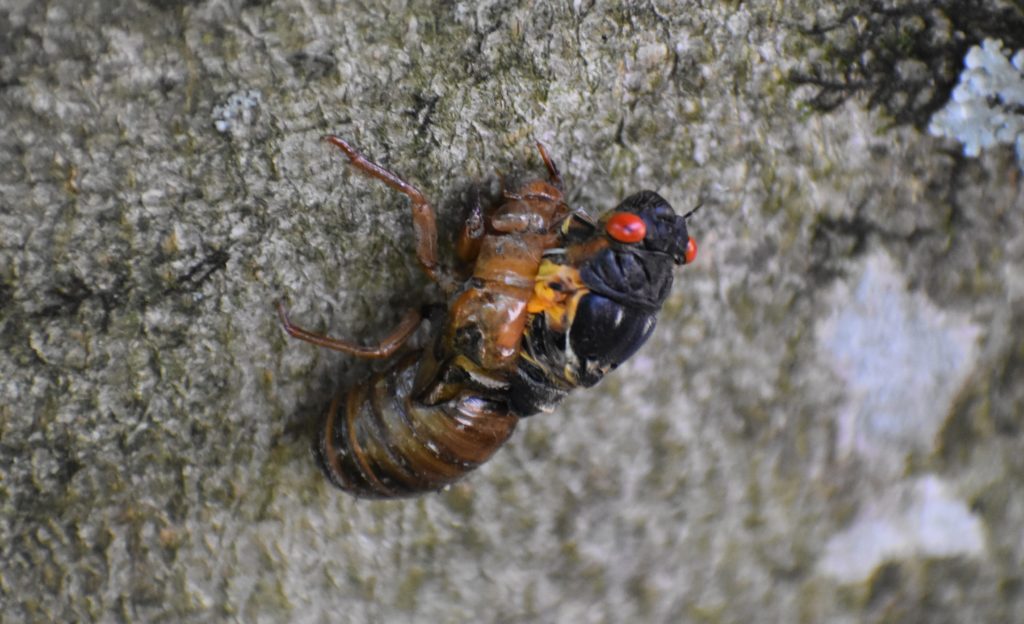
Cicada emerging from its exoskeleton on the beech tree on our front plaza.
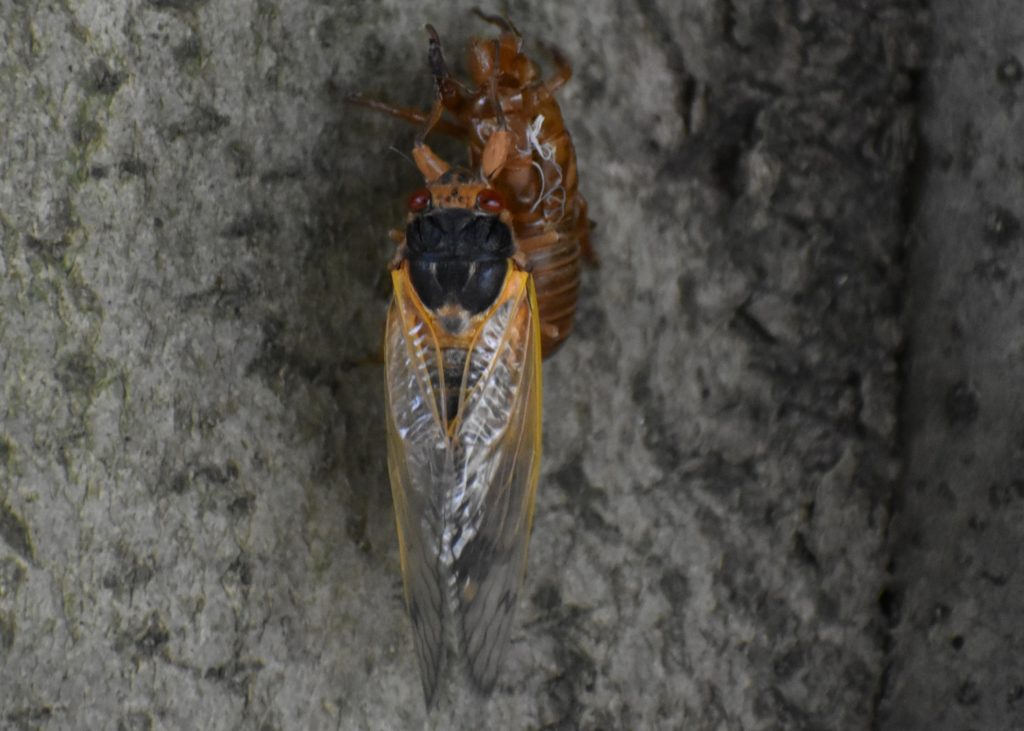
The adult is about the size of a cigar butt, or your thumb. It has red eyes, clear wings, and six legs. It is a poor flyer, bumbling along to a tree, where males mate with females, and the eggs are deposited in tree branches. It makes a lot of noise bumbling around.
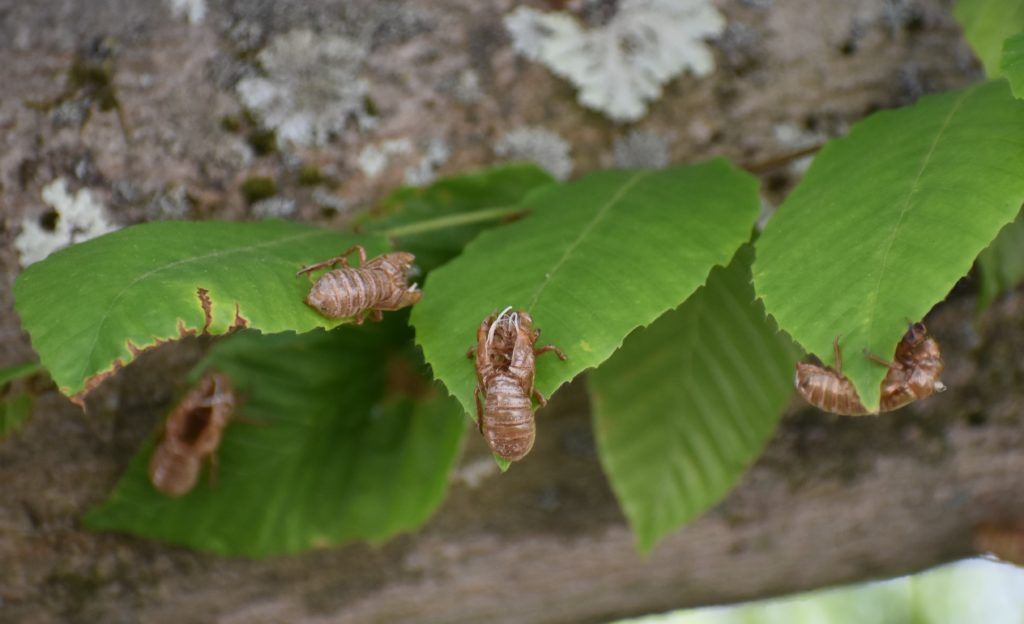
Empty exoskeletons on beech tree leaves.
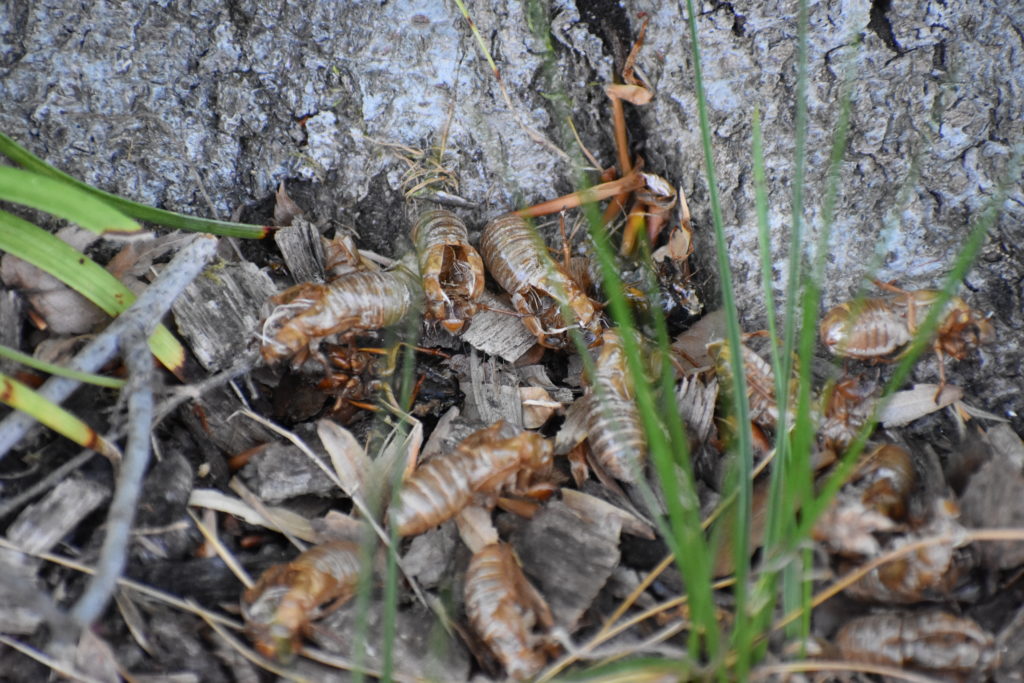
Large trees accumulate many exoskeletons at the base.
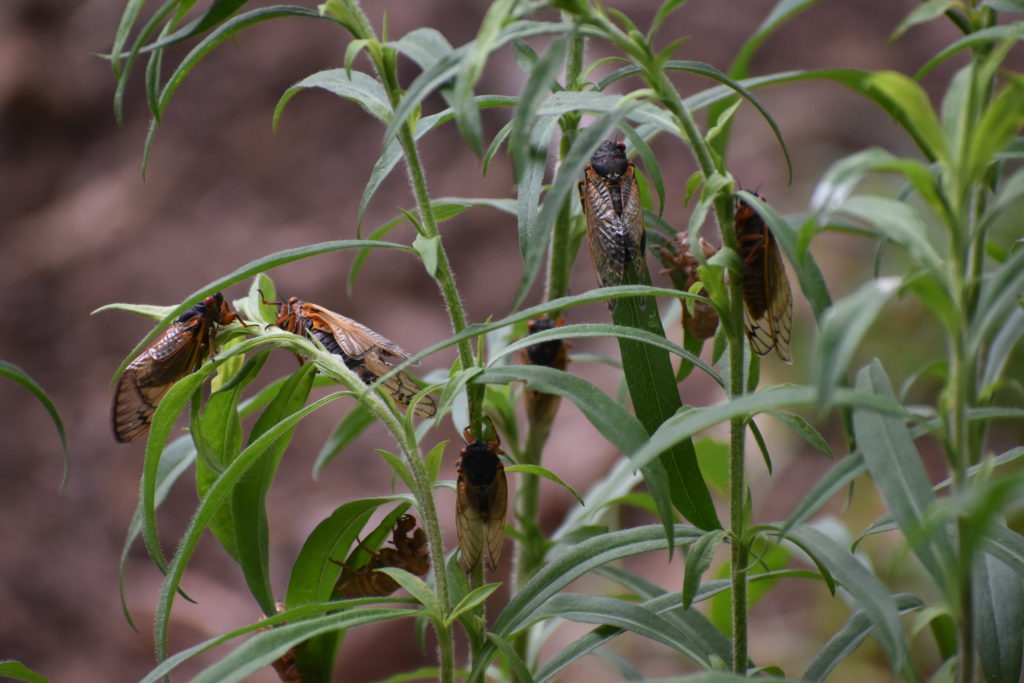
A favorite location for adult cicadas to gather is in the asters on our front plaza. There have been fresh adults there almost every morning for the past week. My hypothesis is that this is a relatively safe location, as birds can’t perch on the small stalks.
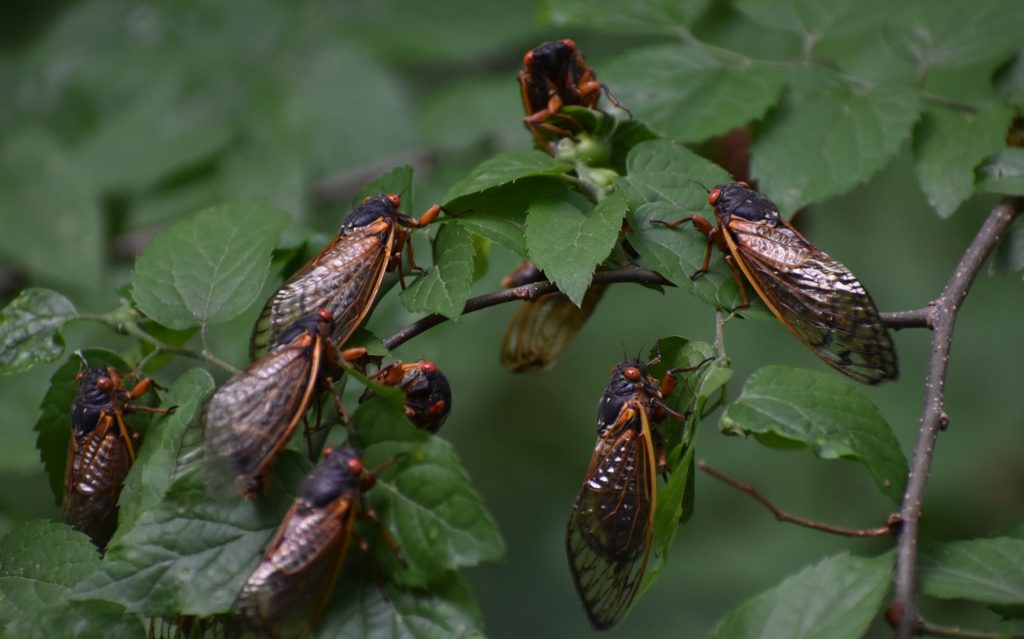
Another favorite location is on the small hackberry tree by the lower parking lot.
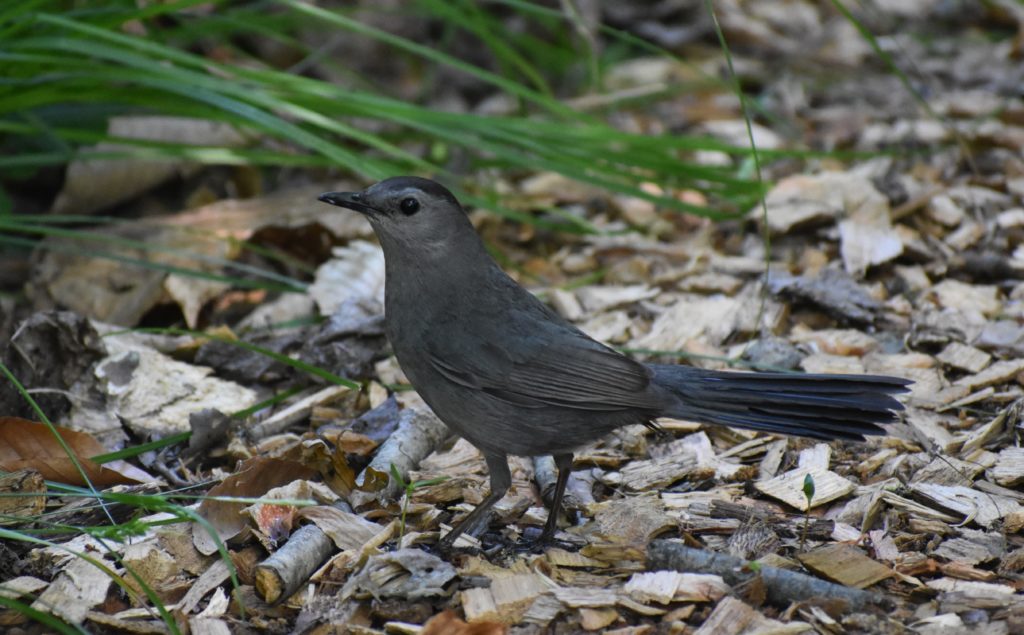
Everything eats cicadas- birds, squirrels, chipmunks, foxes, snakes, and more. Cicadas provide a burst a bonus energy to the ecosystem.
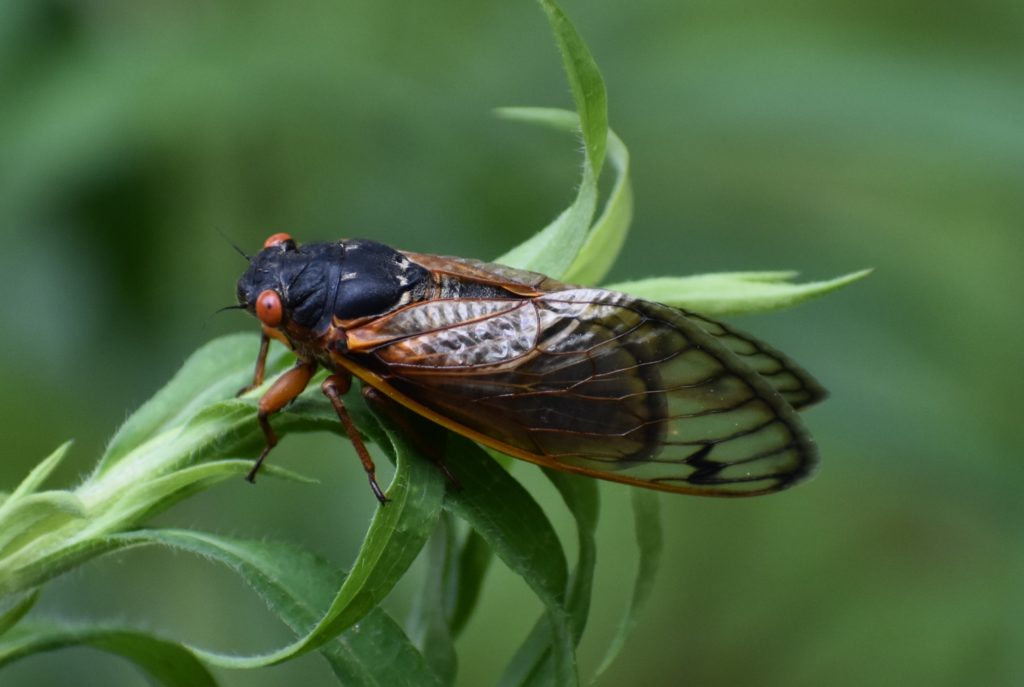
The good news: these bugs neither bite nor sting. They may affect the trees where they deposit their eggs as the trees may lose branches. And they reappear in another 17 years.
I hope you can get outside and listen to the high drone of the cicadas.
Joe
